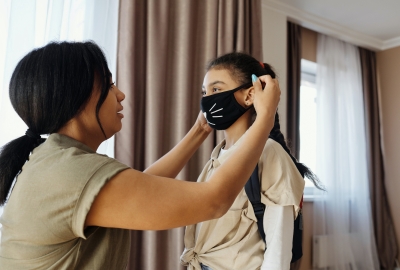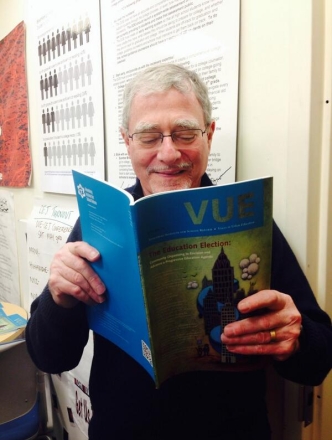
By Norm Fruchter
On December 7th the city’s schools will reopen again, for PreK-3, PreK-4, and elementary school, as well as for District 75 schools for students with disabilities. A reopening date for middle and high schools has yet to be decided. In mid-November, when Mayor de Blasio closed the city schools for the second time since the COVID-19 pandemic began, he acted because the city’s seven-day infection rate had reached his benchmark 3% level. But the school infection rate had stabilized at a rate much lower than the citywide rate. The schools the Mayor closed were far safer, for students and adults than the bars, restaurants, gyms, and other facilities that the Mayor and the Governor have allowed to remain open.
In this revolving door of school closings and reopenings, we should celebrate one major achievement–the implementation of the Regional Enrichment Centers or RECs. When the Mayor initially closed the schools as the pandemic began to ravage the city, the city’s essential workers faced a draconian choice–go to work and leave their children to struggle with online learning with no guidance or support, or stay home to care for their children and miss their critical work (and their paychecks). To resolve this dilemma, the de Blasio administration tasked the Department of Education (DOE) to create a citywide network of Regional Enrichment Centers (RECs). Almost one hundred of these centers opened to serve the educational needs of the children of essential workers only a week after the city schools closed. What follows is a summary of how the RECs worked and what they accomplished during their six-months of operation.
REC enrollment was initially targeted to the children of first responders (police, fire, EMTs), health and hospital workers, transit employees, and utility workers. The city quickly expanded those categories to include postal employees, delivery and logistics workers, food and restaurant staff, pharmacy and grocery store workers, communications personnel, and essential staffers in key city agencies. Children were assigned to REC sites based on their home address, to limit travel time to and from the REC sites, and their parent or caregiver’s role as an essential worker.
Children younger than three were assigned, wherever possible, to childcare centers. Children from age three to high school were assigned to RECs in school buildings equipped with cafeterias that provided three hot meals a day, with multiple classrooms serving no more than 9 students to maintain necessary social distancing. Mask-wearing was compulsory throughout all RECS, and the DOE provided masks for all students and teachers. REC curriculum in the morning hours focused on academic subjects conveyed through remote learning, and afternoon sessions featured in-person arts, music, and physical education programs. The RECs were open from 7:30 am to 6:00 pm to meet the schedules of the city’s essential workers. Though remote learning in the city’s schools ended in June, the RECs continued their enrichment activities until mid-September, 2020.
The RECs were staffed by cadres of DOE employees–an administrator or principal who supervised the center, two school nurses, a social worker, a guidance counselor, and a cohort of teachers and paraprofessionals. Community-based organizations ran most of the childcare centers. Payscale for all positions was the same as in the city schools and childcare centers. REC teachers were primarily substitutes because the DOE’s regular teachers were all working remotely with their classes. Since the DOE hires and pays substitutes on a daily basis, REC building supervisors could hire outside normal DOE procedures. This flexibility helped REC leaders ensure that their teachers could support and adapt remote instruction to meet the needs of their students.
If students came to the REC without a laptop, IPAD or tablet, the REC supplied one. If students were confused about how to log in to their virtual classroom, their REC teacher helped negotiate the connection. REC teachers supported students at differing grade levels as they worked remotely on whatever online learning platforms their regular classroom teachers were using. If the specifics of a remote lesson or assignment confounded students, REC teachers worked one-on-one with them to unpack problems and help resolve them. Teachers identified the puzzled, bewildered or lost students, as well as the strayers who found being computer-bound for two hours too difficult and devised alternative strategies to connect or re-engage them.
REC staff knew that their students’ parents faced life-threatening situations and constant health risk, and understood that the resulting stresses were often internalized by their students. Because the REC social workers and guidance counselors had very low student ratios, compared to the overwhelming numbers of assigned students they struggled to serve in pre-pandemic schooling, they could devote considerable time to addressing individual students’ social and emotional needs.
During afternoon sessions the RECs combined enrichment programs offered by experienced after-school providers with physical education programs organized by groups such as the Public Schools Athletic League. REC buildings were organized for maximum safety from the COVID-19 pandemic through daily monitoring and temperature checks, proper social distancing the universal use of face masks and a thorough disinfecting and cleaning of every building after 6:00 pm. This emergency schooling effort for the children of essential workers continued at a citywide scale for almost six months.
The RECs provided rapid-response student-centered instruction and support in a city ravaged by the COVID-19 pandemic. They served perhaps 5,000-10,000 students daily across the six-months they operated. Anecdotal evidence suggests that infection rates across the REC centers were very low. If the pandemic’s virulence forces yet another period of school closures, the RECs should be re-implemented, because the need to educationally support the children of essential workers will not diminish. But this group of students is not the only one in need of citywide intervention and support. If the schools are forced to close again, the city should not only reconstitute the RECs but expand them to serve the educational needs of the city’s homeless children–now more than 10% of the city’s students.
Homeless students are uniquely vulnerable to school closings because they are usually shut off from remote learning opportunities. Whether in shelters or doubled-up in overcrowded homes and apartments, homeless students have little or no access to computers or Internet connectivity. Their shelters have little capacity to support the instructional needs of students who have managed to obtain Internet access and connect to their online learning classes. The RECs can effectively and safely serve the needs of homeless students because all REC buildings have full Internet access and connectivity, as well as sufficient classroom space to insure low teacher to student and teacher to counselor ratios. Many RECs are located within walking distance of many of the city’s shelters, and if another closure becomes necessary, additional RECs can be developed to serve more shelters. Expanding the RECs to serve homeless students would provide computer capability, Internet access, and teachers to support daily online instruction, as well as enrichment programs, supportive counseling, hot meals, and a safe and stable environment for 11 hours every weekday to the city’s most vulnerable student population.
The RECs started as an emergency effort to serve a critical need–daily instructional online and direct support for the children of our city’s essential workers. Having demonstrated their utility in the initial six months of school closings, if schools are forced to close again the RECs should be reimplemented as a necessary educational life-line, not only for the children of essential workers but for the city’s 110,000 homeless students.


